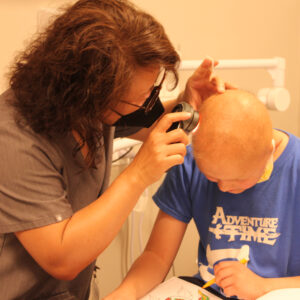Learning about rare conditions like ectodermal dysplasias in a medical journal article or textbook is certainly valuable for medical professionals. But, getting to meet eight individuals with seven different types of ectodermal dysplasias all in one morning is a unique and extraordinary opportunity!
On Thursday, July 14, seven families volunteered to help the National Foundation for Ectodermal Dysplasias (NFED) educate more than 50 doctors, residents and medical students at our Dermatology Grand Rounds: Diagnosing and Treating Ectodermal Dysplasias at Saint Louis University (SLU) School of Medicine. This event was held in conjunction with our Family Conference.
If you are not familiar with Grand Rounds, they are a way to educate medical professionals by presenting an individual’s medical symptoms and treatment to an audience of doctors, residents and medical students. We are incredibly grateful to the NFED families who volunteered to participate.
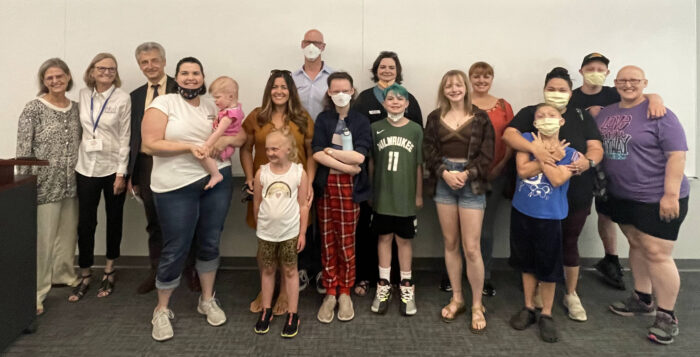
Each represented a different type of ectodermal dysplasia: Shari and Allie Ezell, incontinentia pigmenti; Kerri and Nicole Fasulo, hypohidrotic ectodermal dysplasia; Virginia and Zane Higgins, anykloblepharon-ectodermal defects-cleft lip and/or palate (AEC) syndrome; Tyler, Erin and Ava Nawrocki, acro-dermato-ungual-lacrimal-tooth (ADULT) syndrome; Karl and Sammi Nelsen, type unknown; Andrea and Leland Thurman, type unknown; and Jodi, Michael and Katherine Watts, Goltz syndrome.
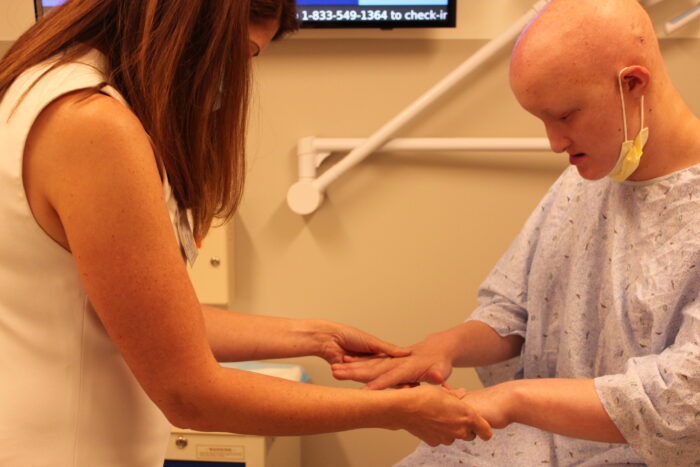
Each family was assigned their own room at the SSM SLUCare Center for Specialized Medicine Dermatology Clinic. The medical professionals would scan a QR code on the door of that room to read that individual’s ectodermal dysplasia story. They would then enter the room to ask questions, learn from the family and see any dermatological symptoms the affected individual may have. Families shared what treatments they had tried and what had worked or not worked.
According to Kerri Fasulo, they had a great experience.
We learned so much in such a short period of time. We received great information about treatment for eyebrows and eye lashes that we are now looking into. The team was so wonderful and professional—we honestly want to go back!
– Kerri Fasulo
In the second part of the Grand Rounds, four speakers presented and led discussions. Holm Schneider, M.D., Ph.D. from the University Hospital Erlangen in Germany discussed the genetics of ectodermal dysplasias and talked about the clinical trial for x-linked hypohidrotic ectodermal dysplasia. NFED Executive Director, Mary Fete, shared information about the wide range of information and services that the Foundation provides for the ectodermal dysplasias community around the world. Becky Abbott, NFED’s Director of Treatment and Research Advocacy, talked about the Ensuring Lasting Smiles Act, a bill that would mandate private insurance companies to provide benefits for the treatment of congenital anomalies.
Dermatology residents who had been assigned to each affected individual presented case reports and led discussions about the patient’s symptoms and treatments.
It was the first time that Dr. Schneider had experienced a Grand Rounds because they are not held in Germany where he practices medicine.
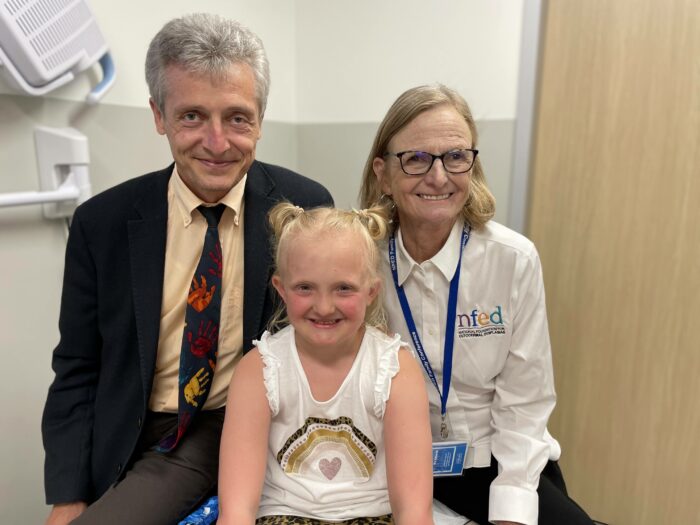
“I enjoyed my visiting professorship at Saint Louis University very much, because it was not limited to lecturing on rare diseases only, but included being involved in NFED Grand Rounds with patients of all age groups who presented their diverse rare conditions and answered questions of the junior colleagues,” said Dr. Schneider. “In German medical education, such Grand Rounds are still unknown. They were, thus, an extraordinary experience for a German professor, motivating me to organize Grand Rounds also at my home university—with the support of our German ectodermal dysplasia patient organisation.”
Educating the medical community has always been at the core of the NFED mission.
“The Grand Rounds went fantastic!” Becky said. “There was so much positive energy as families and medical professionals shared information. It was empowering for our families to be able to educate so many professionals about their challenges.”
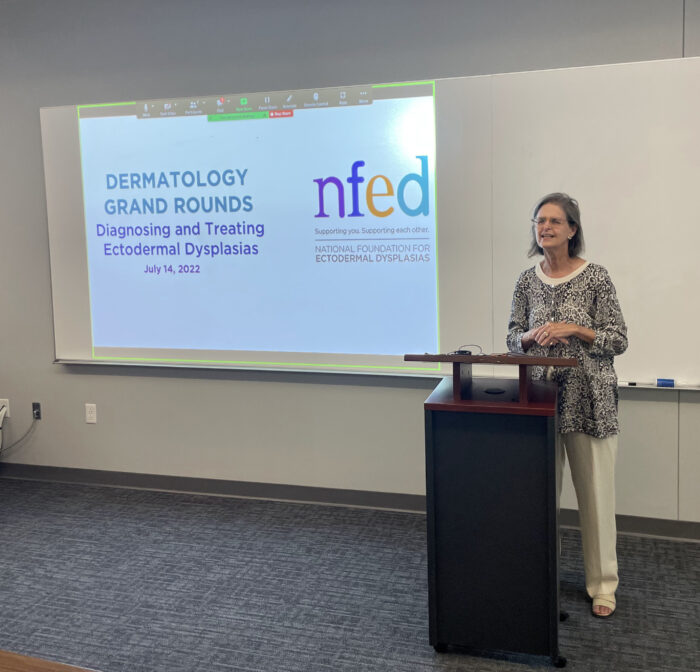
We are grateful to Elaine C. Siegfried, M.D., a dermatologist at SLU and member of the NFED’s Scientific Advisory Council, who made it possible for us to have this educational event. She was instrumental in arranging all of the details at the university, with the assistance of two medical residents.
A big thank you to the families who participated in this event. It is one of the best ways to educate professionals on rare disorders. They will never forget the faces of the individuals who participated, nor will they forget the impact that ectodermal dysplasias has on their lives.
If you see a dermatologist affiliated with a hospital or university, ask if they ever have Grand Rounds. If they do, volunteer to participate to help educate the medical community about ectodermal dysplasias. Contact Becky at becky@nfed.org for more information.
